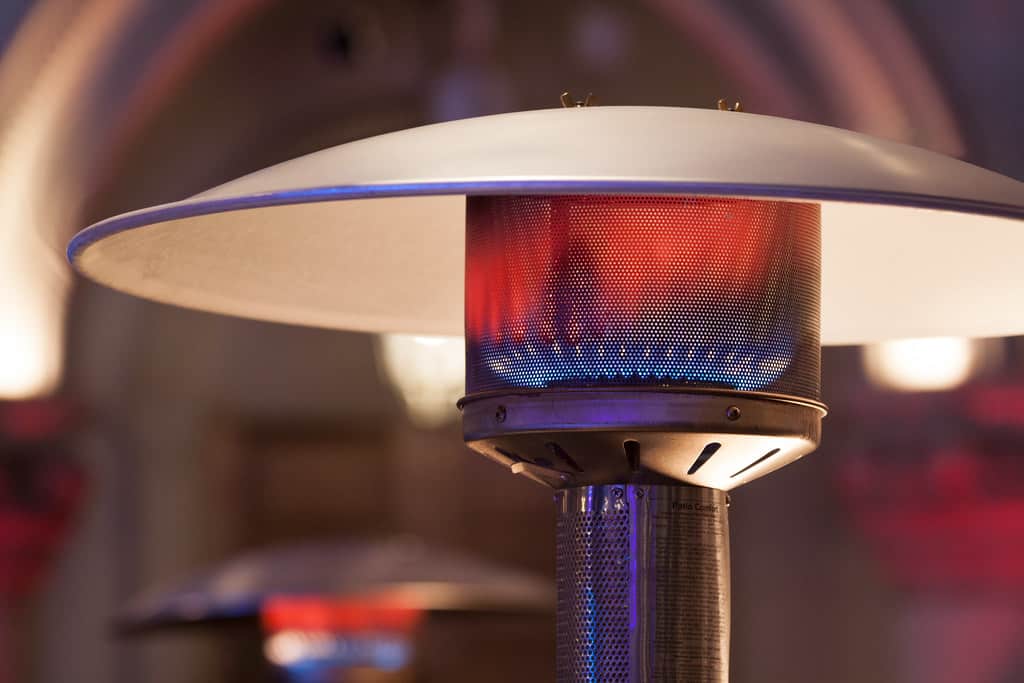Let’s talk fire safety: are patio heaters dangerous? The answer is simple — not if used properly. However, like most things involving gas and flame, you’ll naturally want to take precautions when using a patio heater. You see, there are typically specific instructions and an owner’s manual that come with whichever patio heater you end up purchasing. If you follow the correct installation instructions, you’ll go a long way to prevent undesired outcomes. If make sure you’re only using the patio heater in the manner the manufacturer’s intended, there’s no doubt that you’ll be warm and safe.
Patio Heater Safety
I’ll let you in on a little secret: most patio heater manuals have almost identical content. While the specific details may differ, the core components will remain largely the same. This means that no matter which patio heater you choose, the steps you take to stay safe won’t change a bit. What are those steps, you ask?
- Remove obstacles and obstructions
- Ensure proper clearance
- Test the safety features
- Do not allow children near the unit
- Avoid tiling the patio heater over
That’s not a very daunting list, eh? Following those steps will ensure that you stay safe and keep any potential accidents at bay.
Can You Use A Patio Heater Indoors?
I’ll go ahead and tell you, gas patio heaters should under no circumstances be used in an indoor setting. They are intended solely for outdoor use (and outdoor use only). Why, you ask? Plainly put, gas patio heaters heat an area by raw combustion. This increases the danger level in a few ways. For one thing, the burning fire increases the risk that flammable material with also burst into flame. Fire can spread rapidly and you don’t want to be the victim of an accidental blaze, especially inside your home.
Additionally, the combustion releases harmful greenhouse gases like carbon dioxide and carbon monoxide. Not only are these gasses odorless, but they are extremely harmful to breathe. You could silently be filling your room with gases that will leave you lightheaded, nauseous, and could even kill you!
So in summary, gas patio heaters should be used in open areas with plenty of airflow. Never install them indoors, and only install them on smooth, even surfaces.
Using a Patio Heater Under a Covered Porch (or Patio)
One question I receive often is “is it safe to use a patio heater underneath a covered patio?” The answer is similarly simple to using one outside a covered patio. Simply put: yes, However, there are two important caveats when using a patio heater underneath an awning or roof. What caveats? Let’s explore them together.
- Ensure proper ventilation in your outdoor area (for reasons we explored above)
- if given the choice, choose electric patio heaters over gas-powered under awnings and other overhangs
- Keep proper clearance around all patio heaters
The Proper Clearance Necessary Around Patio Heaters
The clearance necessary around your patio heater unit depends entirely on the BTU output (the amount of energy your patio heater produces while operating). Simply put, the more BTUs your patio heater produces, the more heat it generates for indoor or outdoor settings. Additionally, the equation changes depending on whether you’re using a gas or electric patio heater. At the risk of sounding like a broken record, you should always follow the manufacturer’s recommendation. However, we can give you a decent answer without knowing your exact patio heater model / outdoor situation. Let’s look at the clearance necessary for outdoor patio heaters.
Clearance For Outdoor Patio Heaters
A good rule of thumb is to allow a minimum of 30 inches of clearance space on all four sides. Additionally, you should provide an additional 30 inches of clearance above the outdoor patio heater. Not only should you ensure that it’s at least 30 inches away from any permanent structures, but you should also look for any hanging plants, bird feeders, or other items nearby.
The 30 inch number is primarily for any patio heater between 35,000 and 50,000 BTUs. For anything smaller than 35,000, you can reduce the amount of clearance to roughly 24 inches. Consult your manual if you’re unsure.
Clearance For Indoor Patio Heaters
As stated above, you want to avoid putting gas patio heaters indoors. However, if you have an electric patio heater and want to install it indoors, this can be okay. However, indoor patio heaters have a more complicated formula for determining clearance. The contributing factors include:
- The size of the heater
- The wattage
- What materials are surrounding your heater (the more flammable, the further away)
- The size of the room
I may sound like a broken record, but you should follow the directions of your owners manual (and maybe add some additional space).
Patio Heater Safety Features
When considering whether patio heaters are dangerous, you need to evaluate the built-in safety features the models offer. These can include the following features. If you’re in the market for a new patio heater, consider ensuring your model has them.
| Safety Feature | Description |
| Auto shut-off switch | These shut the entire system off automatically if abnormal conditions are detected. |
| Tilt detection switch | These will temporarily shut the heater off if it detects that the surface is uneven. This is particularly good for tables, grass, or other uneven surfaces. |
Conclusion
So, are patio heaters dangerous? Not as long as you’re careful, provide the proper clearance, and purchase a unit with appropriate safety features. If you’re not careful, aren’t using the heater in the intended manner, or ignore the manufacturer’s instructions, it becomes unsafe quickly. Respect the flame and don’t be a bonehead!

